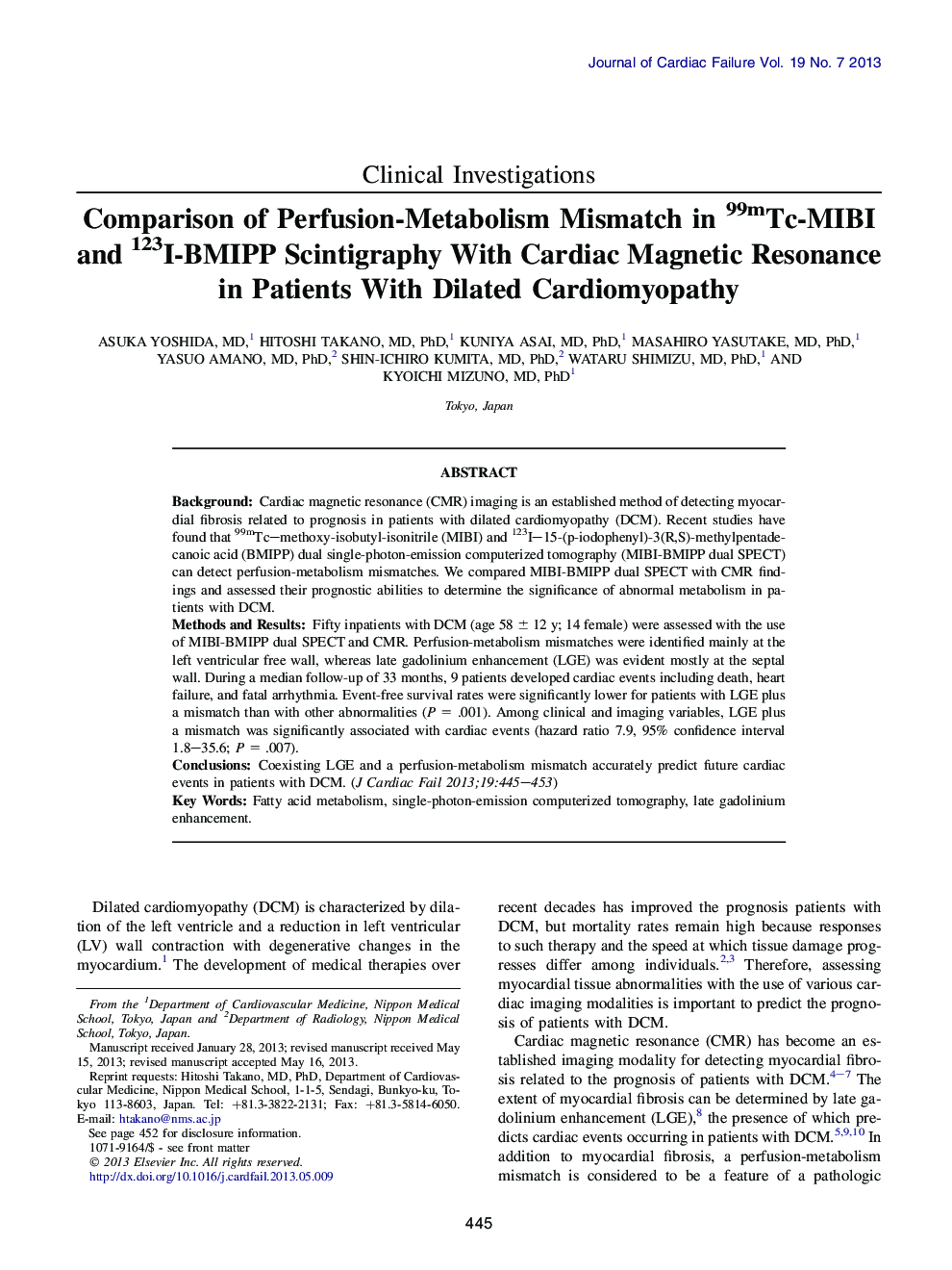| Article ID | Journal | Published Year | Pages | File Type |
|---|---|---|---|---|
| 5983733 | Journal of Cardiac Failure | 2013 | 9 Pages |
BackgroundCardiac magnetic resonance (CMR) imaging is an established method of detecting myocardial fibrosis related to prognosis in patients with dilated cardiomyopathy (DCM). Recent studies have found that 99mTc-methoxy-isobutyl-isonitrile (MIBI) and 123I-15-(p-iodophenyl)-3(R,S)-methylpentadecanoic acid (BMIPP) dual single-photon-emission computerized tomography (MIBI-BMIPP dual SPECT) can detect perfusion-metabolism mismatches. We compared MIBI-BMIPP dual SPECT with CMR findings and assessed their prognostic abilities to determine the significance of abnormal metabolism in patients with DCM.Methods and ResultsFifty inpatients with DCM (age 58 ± 12 y; 14 female) were assessed with the use of MIBI-BMIPP dual SPECT and CMR. Perfusion-metabolism mismatches were identified mainly at the left ventricular free wall, whereas late gadolinium enhancement (LGE) was evident mostly at the septal wall. During a median follow-up of 33 months, 9 patients developed cardiac events including death, heart failure, and fatal arrhythmia. Event-free survival rates were significantly lower for patients with LGE plus a mismatch than with other abnormalities (P = .001). Among clinical and imaging variables, LGE plus a mismatch was significantly associated with cardiac events (hazard ratio 7.9, 95% confidence interval 1.8-35.6; P = .007).ConclusionsCoexisting LGE and a perfusion-metabolism mismatch accurately predict future cardiac events in patients with DCM.
